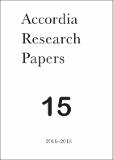| dc.contributor.author | Herring, Edward | |
| dc.date.accessioned | 2019-06-18T08:17:44Z | |
| dc.date.available | 2019-06-18T08:17:44Z | |
| dc.date.issued | 2019 | |
| dc.identifier.citation | Herring, Edward. (2019). She’s can be “heroes”: Female status and the Daunian stelae. Accordia Research Papers, 15 [2016-2018], 87-98. | en_IE |
| dc.identifier.isbn | 978-1873415-46-7 | |
| dc.identifier.uri | http://hdl.handle.net/10379/15234 | |
| dc.description.abstract | In Accordia Research Papers 11, Guilia Saltini Semerari published a thought-provoking article
on ‘high status’ female burials in 6th century BC Basilicata. In this paper, she contended
that ‘wealthy’ female burials should not be regarded either as anomalous or as a temporary
manifestation of an unstable sociopolitical situation (contra Markantonatos’ argument (1998:
190) for such burials having belonged to female power brokers, who mediated intensifying
relationships with South Italy’s Greek communities). Furthermore, Saltini Semerari
maintains that élite women enjoyed a high status in their own right, because of important
spheres of influence dominated by women, and not by virtue of their association with their
husbands, fathers and other male relatives. She goes on, “…it was a long-standing feature
of Basilicata society to allow women to gain and express power according to the prevalent
élite ideology…” (Saltini Semerari 2009: 130).
Prior to reading this paper, although I had acknowledged the possibility of independent
female status (Herring 2007a: 280–1), I had, in truth, always considered ‘wealthy’ female
burials as evidence of a kinship-based social structure: thereby, effectively relegating female
status to that of a derivative of male status, i.e. that women enjoyed or, more correctly,
were buried with the trappings of status by virtue of being the mothers, wives, sisters, and
daughters of high status (and probably powerful) men. The fact that there are ‘wealthy’
tombs belonging to children suggested that status could be acquired by association or
birthright alone rather than independently (a particularly striking example of a ‘wealthy’
child burial would be Tomb 102 from Braida (Vaglio Basilicata, Potenza) (Setari 1996)).
That notwithstanding, the power of Saltini Semerari’s argument has led me to think
again about female status. In this paper I shall consider a different part of South Italy,
the Tavoliere plain, from which there is another roughly contemporary, potential source of
evidence for female status, the so-called Daunian stelae.1 | en_IE |
| dc.format | application/pdf | en_IE |
| dc.language.iso | en | en_IE |
| dc.publisher | Accordia Research Institute, University of London | en_IE |
| dc.relation.ispartof | Accordia Research Papers | en |
| dc.rights | Attribution-NonCommercial-NoDerivs 3.0 Ireland | |
| dc.rights.uri | https://creativecommons.org/licenses/by-nc-nd/3.0/ie/ | |
| dc.subject | Female status | en_IE |
| dc.subject | Daunian stelae | en_IE |
| dc.subject | stelae | en_IE |
| dc.title | She’s can be “heroes”: Female status and the Daunian stelae | en_IE |
| dc.type | Article | en_IE |
| dc.date.updated | 2019-06-17T11:22:16Z | |
| dc.local.publishedsource | https://www.ucl.ac.uk/accordia/arp.htm | en_IE |
| dc.description.peer-reviewed | peer-reviewed | |
| dc.internal.rssid | 16536233 | |
| dc.local.contact | Edward Herring, Room 210, Arts Millennium Building, Nui Galway. 3383 Email: edward.herring@nuigalway.ie | |
| dc.local.copyrightchecked | Yes | |
| dc.local.version | PUBLISHED | |
| nui.item.downloads | 148 | |


